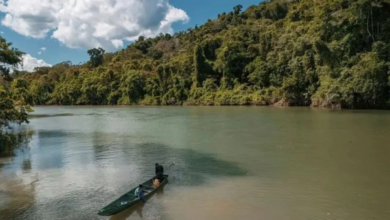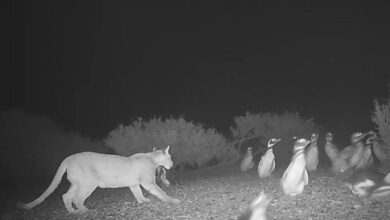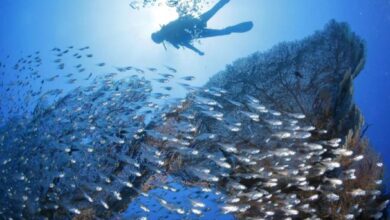Improving protection of wildlife in national parks
How are wild animals managed in European national parks and what factors influence management decisions?

Herd of antelopes drinking water. / Photo: Pixabay – Reference image
EurekAlert | UNIVERSITY OF FREIBURG
Listen to this article
Leer en español: Hay que mejorar la protección de la vida silvestre en los parques nacionales
How are wild animals managed in European national parks and what factors influence management decisions? The team of Suzanne van Beeck Calkoen and associate professor Dr. Marco Heurich of the Department of Wildlife Ecology and Management at the University of Freiburg has examined differences in national policies for wild animal management in European national parks. Due to major variations in wild animal management policies in Europe, the researchers are calling for a uniform legal framework in order to improve the protection of wildlife in national parks. The researchers have published their latest results in the scientific publication the "Journal of Environmental Management."
The team has demonstrated that many of the European national parks fail to meet the targets set for the management of protected areas as defined by the International Union for Conservation of Nature (IUCN). "In contrast to the United States and Canada, in Europe, there are no standard regulations for handling ungulates such as roe and red deer within the national parks," explains van Beeck Calkoen.
According to the researchers, the absence of common policies and differences between species communities, hunting traditions, and cultural or political contexts have led to major differences in wildlife management in European countries. In order to achieve the aims of the national parks and continue to further the development of strategies for handling wild animals, van Beeck Calkoen and other researchers are calling for uniform, European policies on conserving wild animals that correspond to the IUCN guidelines.
"A framework is needed that provides a common definition of national parks with clearly specified laws, requirements, and policies," says van Beeck Calkoen. The scientists emphasize that the parks require an integrated, adaptive management system that takes into account all ecosystem processes, local traditions, and socio-political contexts, and a network of national park authorities that promotes the sharing of knowledge and development of the management system.
Also read: Scientists warn humanity about worldwide insect decline
Among the primary aims of national parks are the protection of natural processes and species conservation. If these goals are in conflict with one another, then park administrations decide over which measures should be taken while taking into consideration the protected assets of the national parks. In order to analyze whether the measures were in accordance with the defined goals, van Beeck Calkoen and her team evaluated the state of management of ungulates in European national parks on the basis of authenticity and other variables that could influence management. To do this, the team collected data from 209 European national parks in 29 countries.
"In more than two-thirds of the national parks, ungulate populations were regulated through culling, hunting, or both," explains Heurich, who led the study. What is more, only 28.5 percent of the parks are in compliance with international standards because they have spaces that are excluded from the human intervention which accounts for at least three-quarters of their total surface area.




